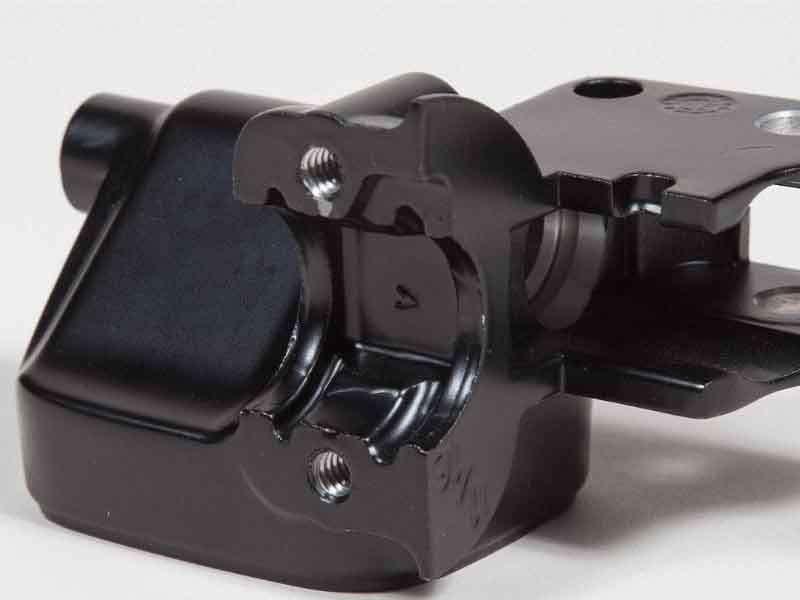Powder coating, painting, chromate conversion, and anodizing, are common ways to finish die cast parts to improve their performance or appearance.
In some die casting applications, components must also be made pressure tight to hold pressurized fluid or gases. Companies use vacuum impregnation to meet these requirements. This is a process that seals internal porosity, which is created during the casting process.
A common question asked about vacuum impregnation is “Should die casting porosity be sealed before or after finishing?”
The general rule is that vacuum impregnation should be done before any surface finishing. This will seal the porosity and eliminate any failure mode that could develop from outgassing, chemical compatibility or bleed out of pretreatments.
Examples of failure modes that can occur if impregnation is done after the finish is applied include the following:
Paint Finish
The painted part will be exposed to sealant, and certain minerals and alkalis in the water. The sealant can react with the paint, and thus degrade its adhesion to the part’s surface.
Additionally, during impregnation the painted part is heated to 195° F in hot water. The water or residual minerals may leave water spots, or even alter the color or degrade the finish (Image 1).
 Image 1: The water used in vacuum impregnation, or residual minerals in that water, may leave spots on the part. In worse cases, water may alter the color hue in color or degrade the part’s finish.
Image 1: The water used in vacuum impregnation, or residual minerals in that water, may leave spots on the part. In worse cases, water may alter the color hue in color or degrade the part’s finish.
Chemical Finish
Many chemical finishes require aggressive liquid pre-treatments for the finish to ‘bond’ to the casting surfaces. These pretreatments may penetrate the near surface porosity and remain in the pore even after the finish is completed. During the impregnation process, the vacuum will pull these chemicals from the porosity and into the finish. This may lead to corrosion, and a defect known as “blooming”.
Chromate Finish
If a chromate finish is applied to a part prior to impregnation, the heat required to cure the vacuum impregnation sealant (195° F) will degrade the quality of the coating. This can lead to a premature failure of the coating and contribute to the oxidation of the part.
Finally, regardless of the type of finish, the part can be damaged or scratched from handling and processing (Image 2).
 Image 2: If not properly fixtured, parts can shift during the impregnation process and become damaged or scratched.
Image 2: If not properly fixtured, parts can shift during the impregnation process and become damaged or scratched.
Vacuum Impregnation Eliminates Powder Coating Out Gassing
Vacuum impregnation not only seals porosity but may prevent cosmetic defects in powder coating. If not sealed, the pores would otherwise hold air. This air may expand and outgas during the curing stage. The air escapes through the powder, creating pin holes in the finish (Image 3). These pinholes are not only unattractive, they also allow moisture and corrosion to damage the part. Vacuum impregnation prevents this issue from happening by removing air and filling the porosity with sealant.
 Image 3: If not sealed, these pores would otherwise hold air. This air may expand and out gas during the curing stage, causing pin holes.
Image 3: If not sealed, these pores would otherwise hold air. This air may expand and out gas during the curing stage, causing pin holes.
What if the Parts are Machined?
Any machined parts should be sealed only after the machining process. This is because a machine tool may expose or open porosity when it cuts into the part's surface. This new, inter-connected porosity will create a leak path. The leak path will cause fluids and gases to leak from the casting, causing it to be non-conforming, and in many cases unusable.
In Summary
Vacuum impregnation is the most effective way to seal casting porosity, but it must be performed at the correct stage of the production process. Performing vacuum impregnation prior to finishing will ensure that all leak paths are sealed, while safeguarding and enhancing the quality of the finish.
Andy Marin is the Marketing Coordinator at Godfrey & Wing. Visit www.godfreywing.com



































